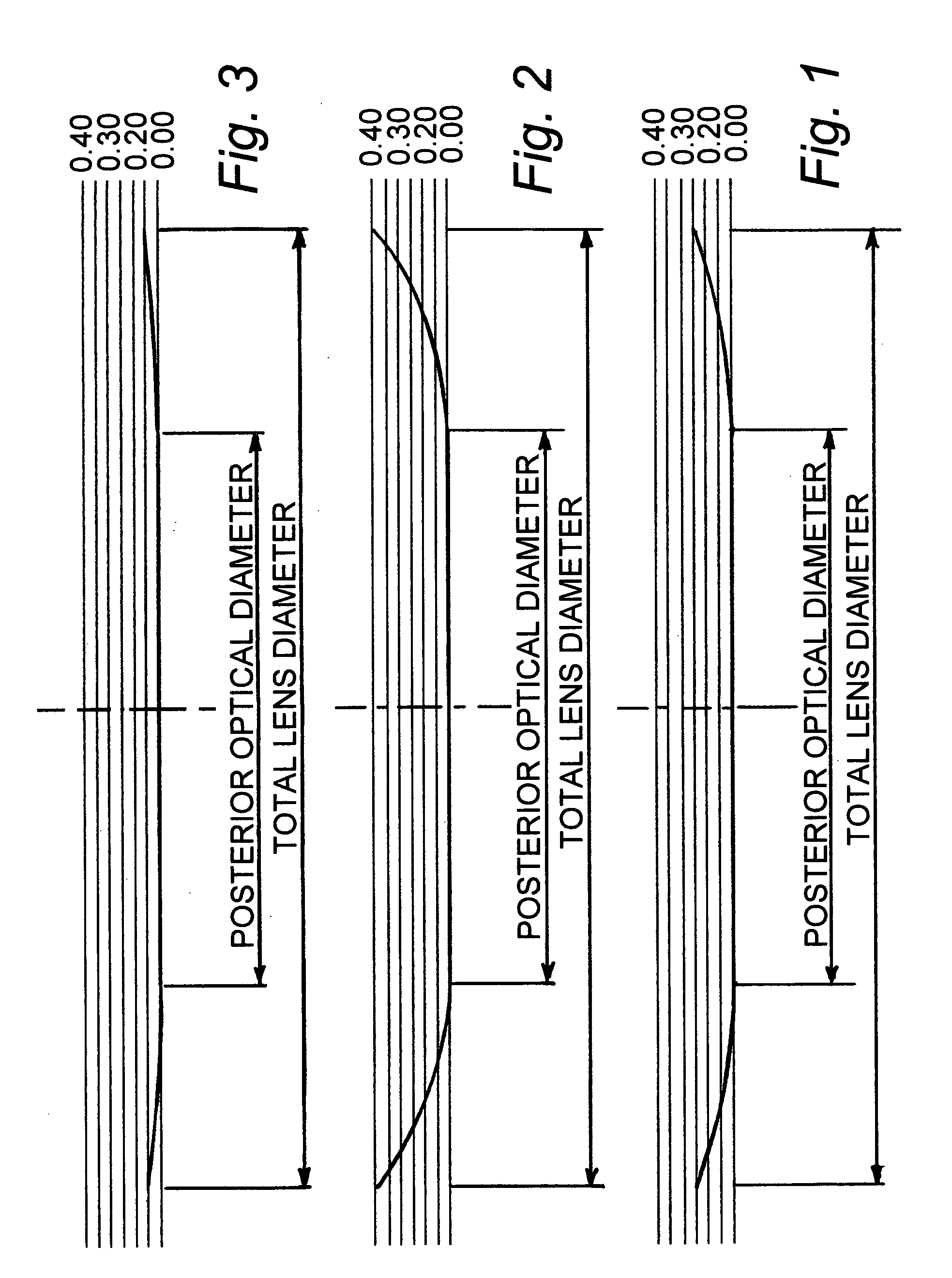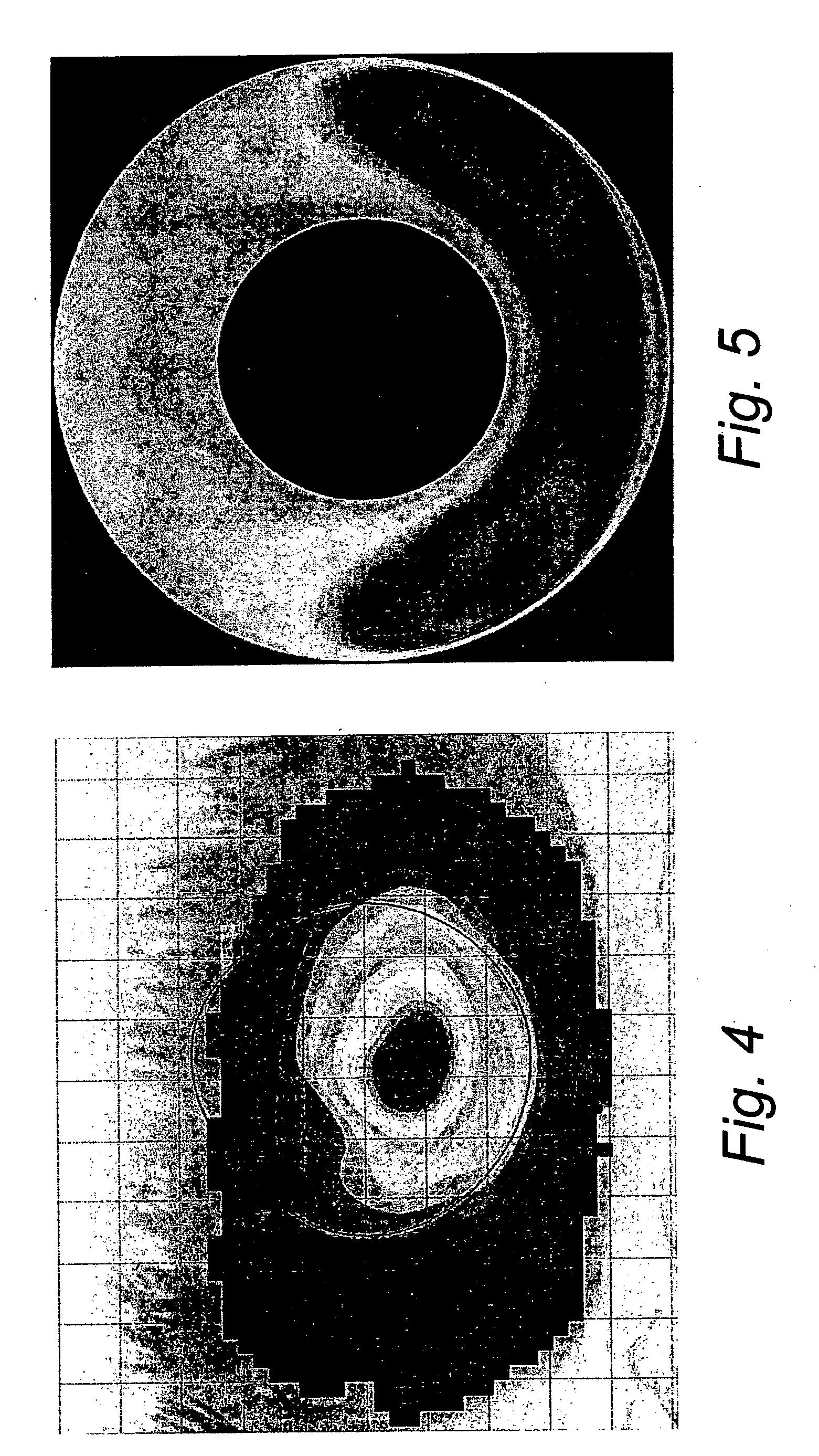Method of making a soft contact lens
a contact lens and soft technology, applied in the field of soft contact lens making, can solve the problems of defective vision, keratoconic visual defects that cannot be satisfactorily corrected by spectacles, and human vision defects may also arise, so as to achieve optimal or near optimal correction of visual defects and correct visual defects
- Summary
- Abstract
- Description
- Claims
- Application Information
AI Technical Summary
Benefits of technology
Problems solved by technology
Method used
Image
Examples
Embodiment Construction
[0044]As a precursor the this example, the topography of a keratoconus eye for a specific subject was taken using a Medmont E300 topgrapher and transferred into the computer optical modelling system via the export facility of the Medmont topographer with the file extension “.muf”. The topography image displaying tangential power map (FIG. 4) clearly shows an inferior cone typical of the eye disease keratoconus.
[0045]The optic portion of the posterior surface of the contact lens was defined using the “.muf” file in terms of polar coordinates, sagittal displacement in the direction of the optical axis and differential terms in polar coordinates. In order to fully define the whole optical surface, determined to a diameter of 8.00 mm, the topography of the surface was extrapolated where necessary to the defined optical diameter using Bezier surface patches.
[0046]In order to fulfil step (b), the corneal map was extended into the limbal and scleral region using a tangential flattening lim...
PUM
 Login to View More
Login to View More Abstract
Description
Claims
Application Information
 Login to View More
Login to View More - R&D
- Intellectual Property
- Life Sciences
- Materials
- Tech Scout
- Unparalleled Data Quality
- Higher Quality Content
- 60% Fewer Hallucinations
Browse by: Latest US Patents, China's latest patents, Technical Efficacy Thesaurus, Application Domain, Technology Topic, Popular Technical Reports.
© 2025 PatSnap. All rights reserved.Legal|Privacy policy|Modern Slavery Act Transparency Statement|Sitemap|About US| Contact US: help@patsnap.com



